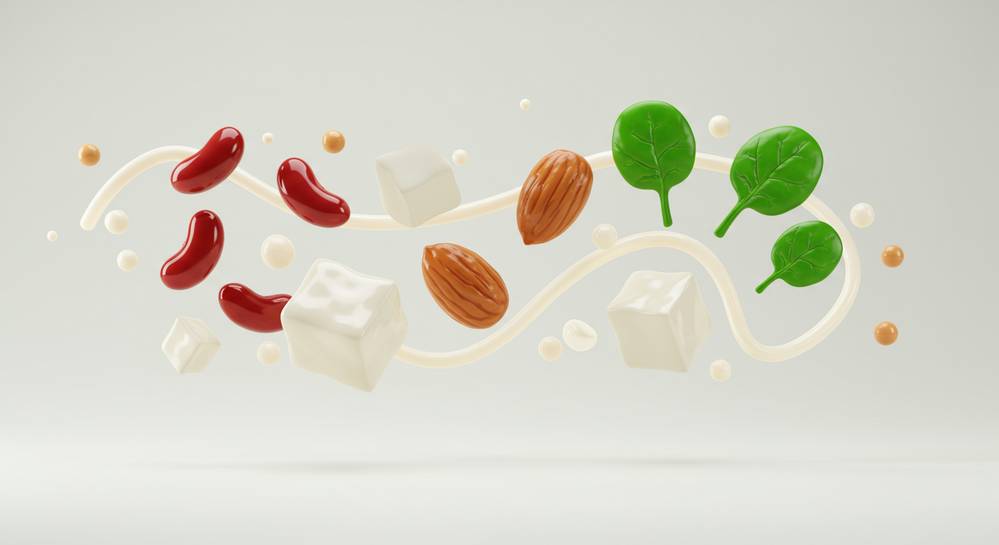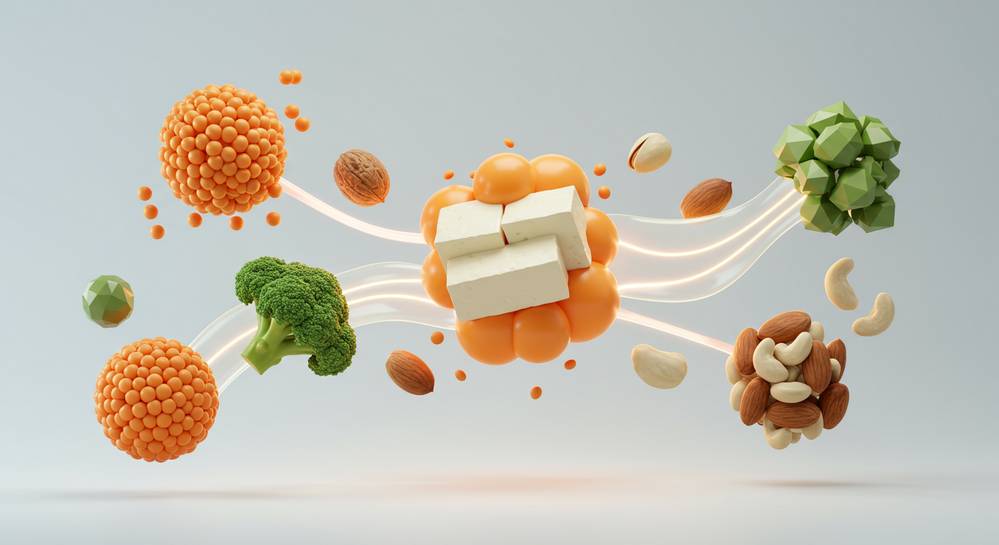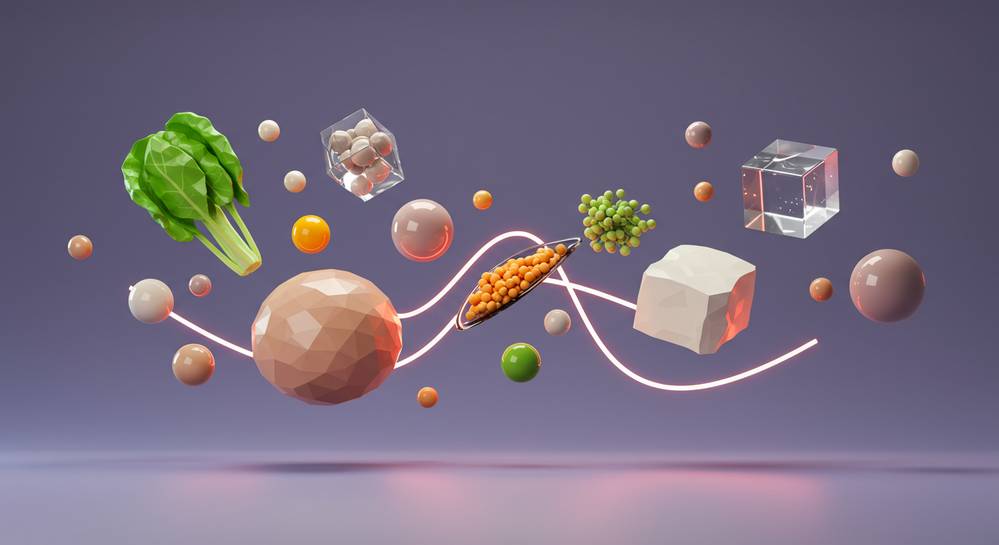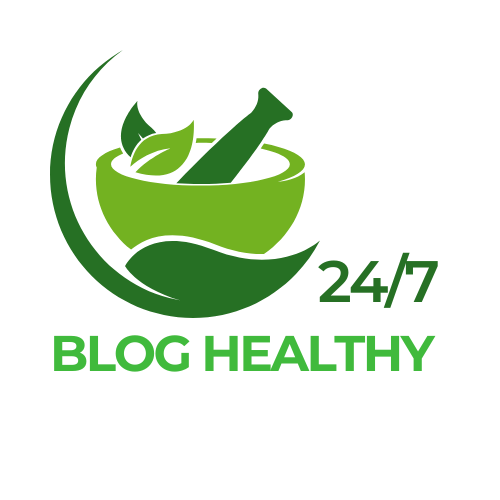Many people considering a plant-based lifestyle share a common concern: ensuring adequate protein intake. The good news is that with a little knowledge and planning, it is entirely achievable to thrive on plant-based protein. This guide provides a clear roadmap on how to get enough protein on a vegetarian diet, focusing on the best food sources and how to combine them for optimal health and muscle maintenance.
Understanding your protein needs on a vegetarian diet

Understanding your vegetarian protein requirements
Protein is a vital macronutrient built from amino acids. While most plant foods are low in one or more essential amino acids, this is easily managed. The myth of needing to combine proteins at every meal is outdated. Your body maintains an amino acid pool, allowing it to combine proteins from foods eaten throughout the day. This makes it straightforward to get enough protein on a vegetarian diet with simple variety.
The key is knowing your specific needs, which depend on your activity level. Many plant-based proteins are also excellent sources of fiber, reinforcing the importance of fiber for digestive health.
- Sedentary Adults: The standard recommendation is 0.8 grams of protein per kilogram of body weight.
- Active Individuals: Athletes or those with active lifestyles may need more, typically 1.2 to 2.0 grams per kilogram to support muscle repair and growth.
Focus on consuming a wide range of protein sources daily. This approach ensures you receive a complete amino acid profile over time without complex tracking. A varied diet is the most effective strategy.
The best vegetarian sources of protein

Top plant-based protein sources
Stocking your pantry with a variety of high-protein vegetarian foods is the most practical way to meet your daily needs. Integrating these powerful plant-based protein sources into your meals makes the process feel effortless. These foods provide the essential building blocks for your body. A diverse diet is the foundation of success, a core principle we cover throughout undefined.
- Legumes: Lentils, chickpeas, and beans are affordable powerhouses, offering 15-18 grams of protein per cooked cup.
- Soy Products: Tofu, tempeh, and edamame are complete proteins. Tempeh leads with over 30 grams per cup, while tofu provides around 20 grams.
- Quinoa: This versatile grain is a complete protein, delivering over 8 grams per cooked cup.
- Nuts and Seeds: Almonds, chia, and hemp seeds are perfect for snacks. Hemp seeds are a complete protein with 10 grams per three tablespoons.
- Seitan: Made from wheat gluten, seitan offers a meat-like texture and an impressive 25 grams of protein per 100g serving.
Combining foods for complete protein intake
The old idea of combining specific proteins at every meal is outdated. Modern nutritional science confirms this is unnecessary. Your body cleverly maintains a pool of amino acids, drawing from different foods you eat throughout the day. This makes getting a complete protein profile much simpler than once thought. While strict pairing is not required, understanding classic combinations can inspire balanced and delicious meals.
Classic protein pairings
- Grains with Legumes: This timeless duo is found in cuisines globally. Think rice and beans, lentil soup with whole-wheat bread, or a peanut butter sandwich.
- Legumes with Nuts or Seeds: A salad with chickpeas and sunflower seeds is a great example. Hummus, made from chickpeas and sesame seed paste, is another powerful combination.
Focusing on a diverse diet is the most effective and stress-free strategy. Simply including a variety of legumes, whole grains, nuts, and seeds in your daily routine is the best way to get enough protein on a vegetarian diet and cover all your amino acid needs.
A sample high protein vegetarian meal plan

Putting it all together is simpler than you think. This sample meal plan illustrates how to get enough protein on a vegetarian diet by distributing it across your day. This structure ensures a steady supply of energy and nutrients, making your goals achievable and delicious.
Morning: a protein-packed start
Kickstart your day with a bowl of Greek yogurt or a high-protein plant-based alternative. Top it with a tablespoon of chia seeds, fresh berries, and sliced almonds for a delicious and powerful meal that fuels you for hours.
Midday: a satisfying power bowl
For lunch, create a large salad with spinach, one cup of cooked Quinoa, and a half-cup of chickpeas. Sprinkle with pumpkin seeds and a lemon-tahini dressing for a nutrient-dense meal that keeps you full and focused.
Evening: delicious and restorative
A stir-fry with firm tofu or tempeh, broccoli, and bell peppers makes an excellent dinner. Served with brown rice, it delivers a complete protein profile to help your body repair and recover overnight.
Snacks: smart energy boosts
Bridge the gap between meals with healthy snacks. A handful of nuts, roasted edamame, or an apple with peanut butter are great options to maintain energy and contribute to your daily protein target.
Achieving your protein goals on a vegetarian diet is not about restriction but about smart, diverse food choices. By incorporating a variety of legumes, grains, nuts, and seeds, you can easily meet your body’s needs for strength and vitality. For more insights into building a healthy lifestyle, continue exploring our articles on Blog Healthy 24h.
